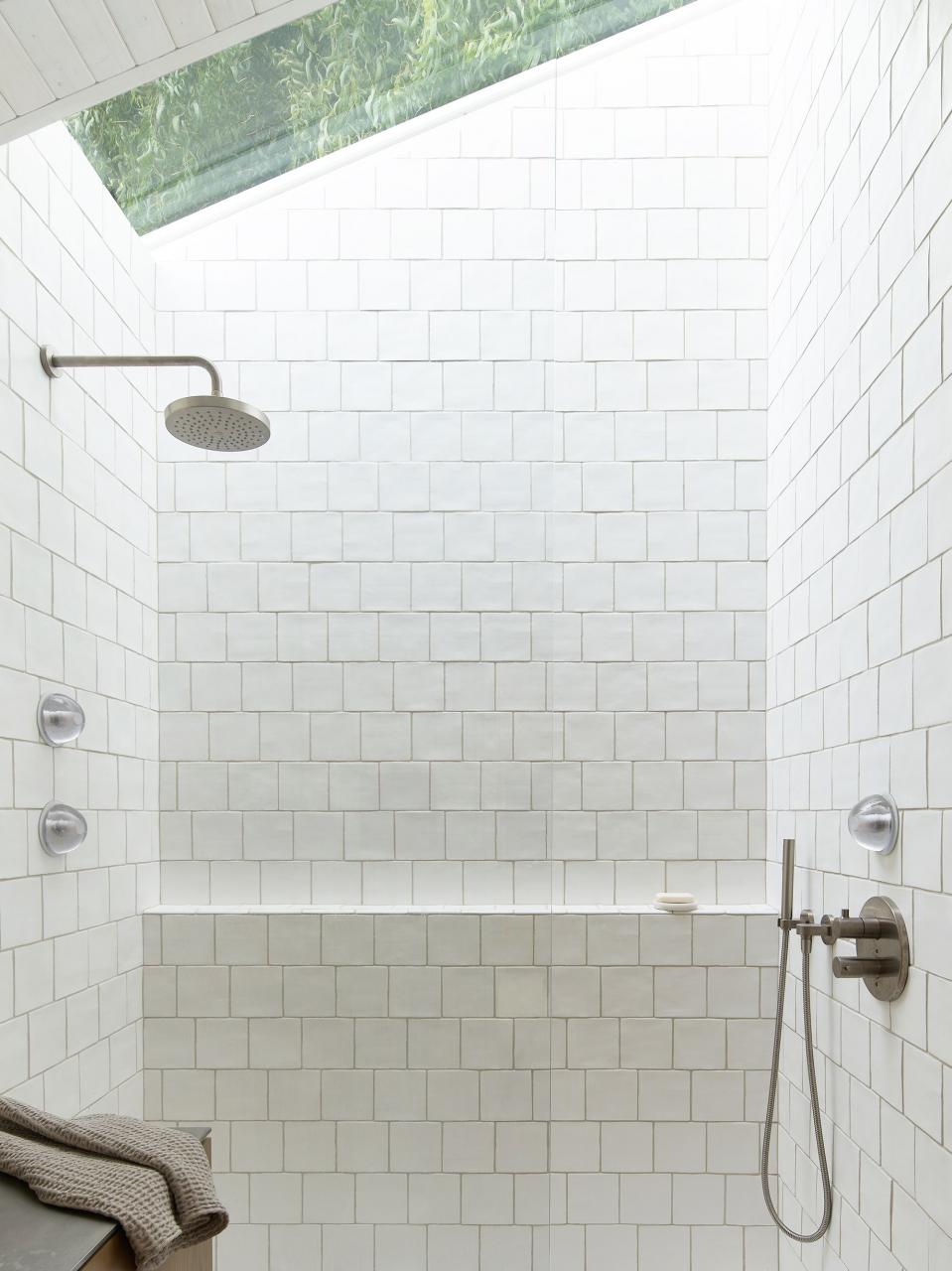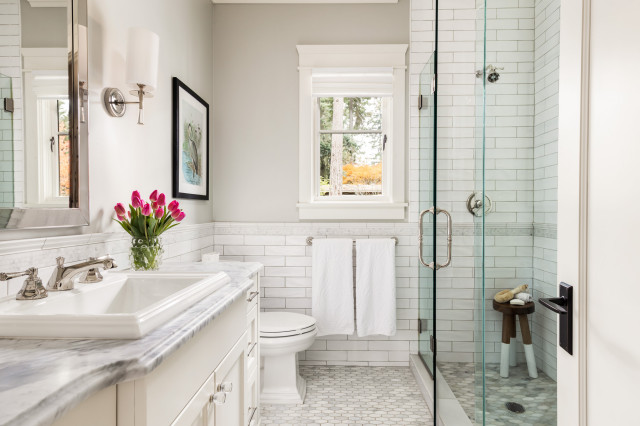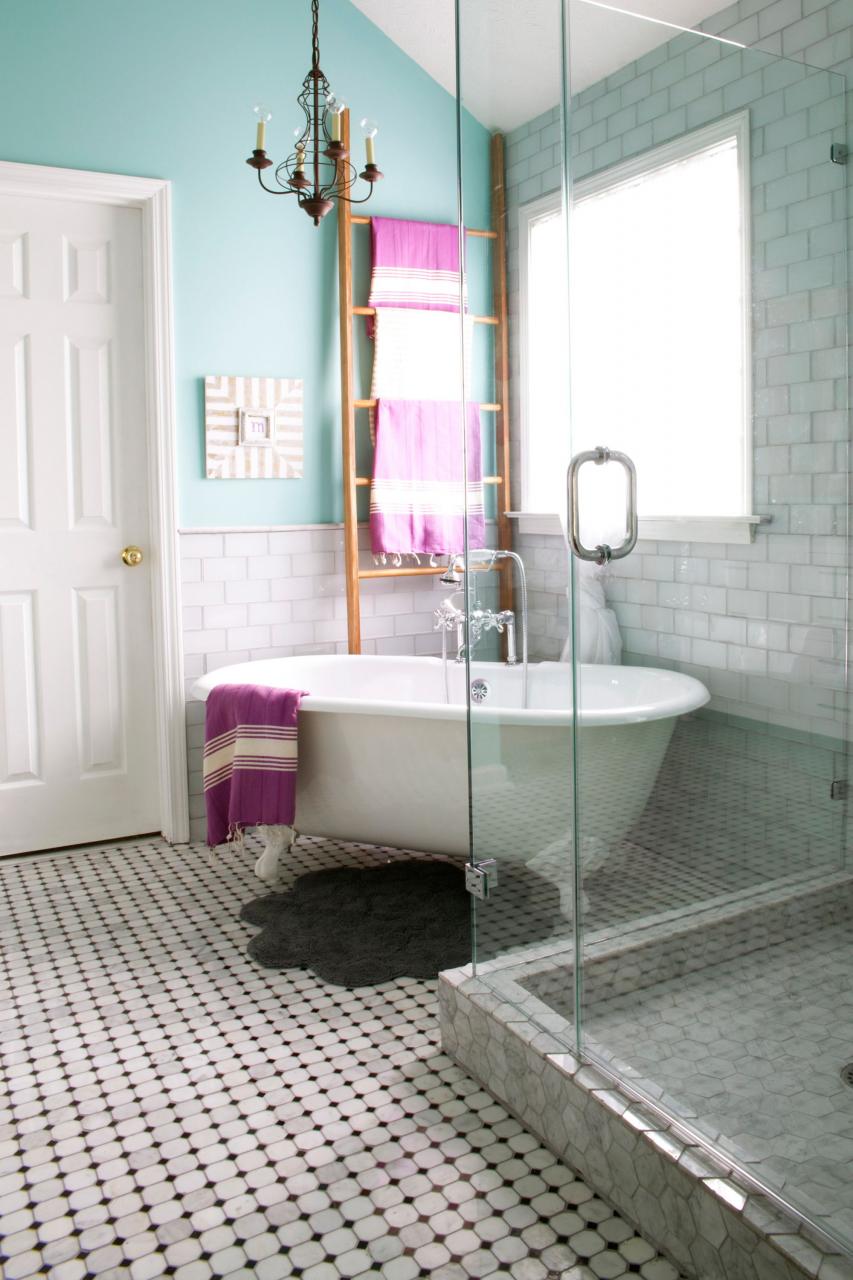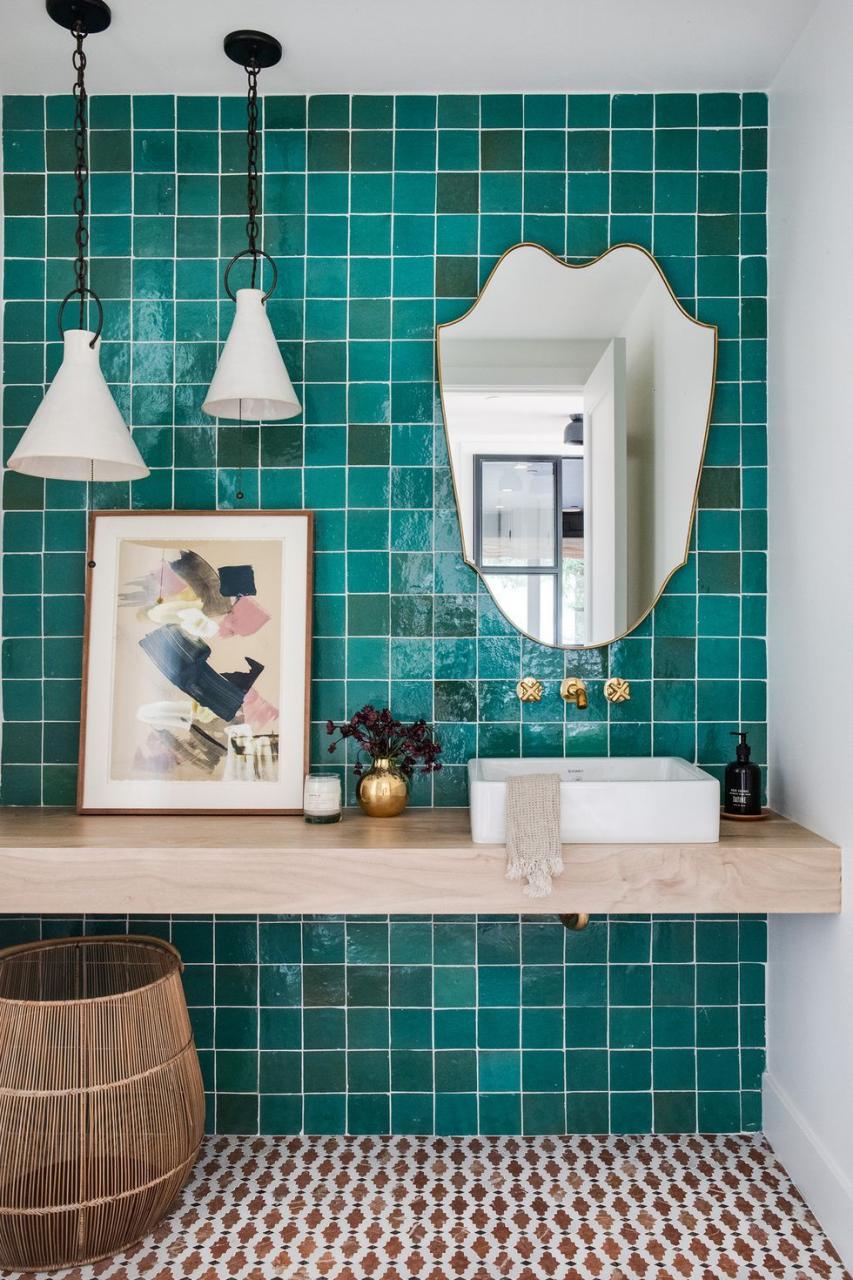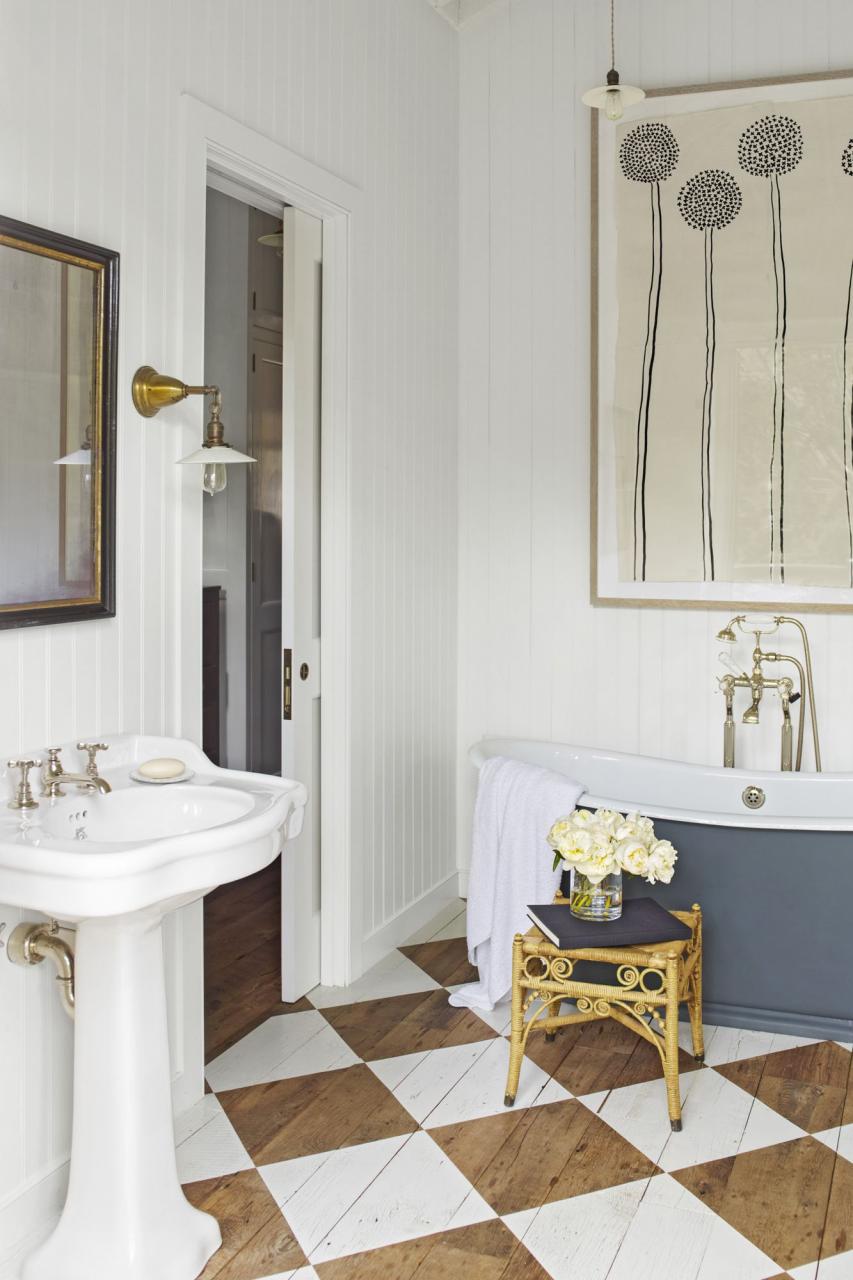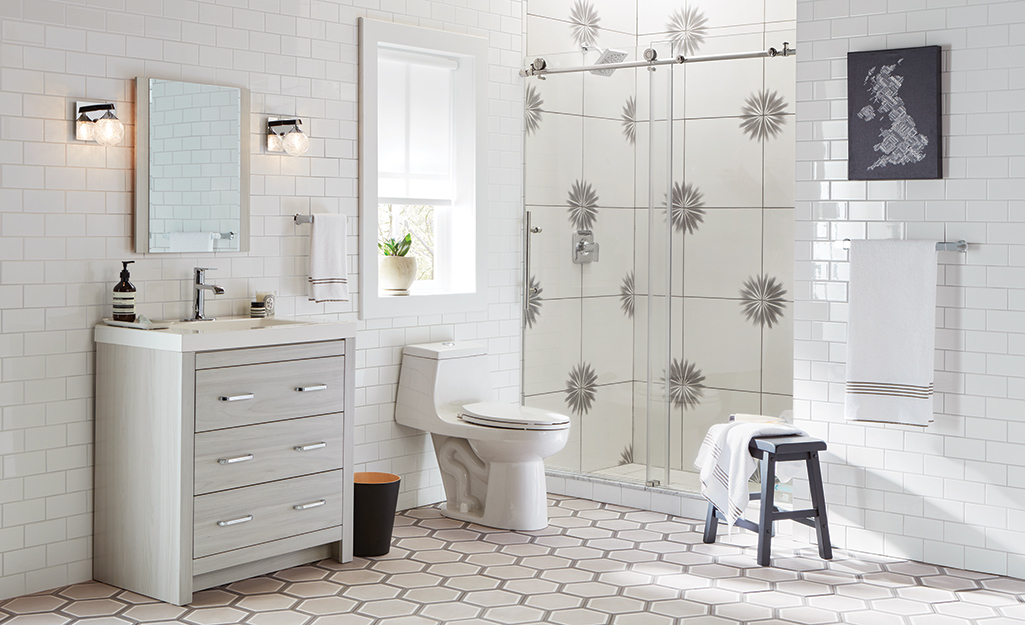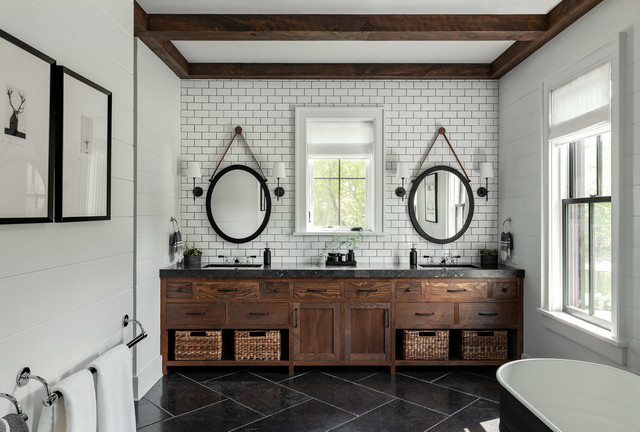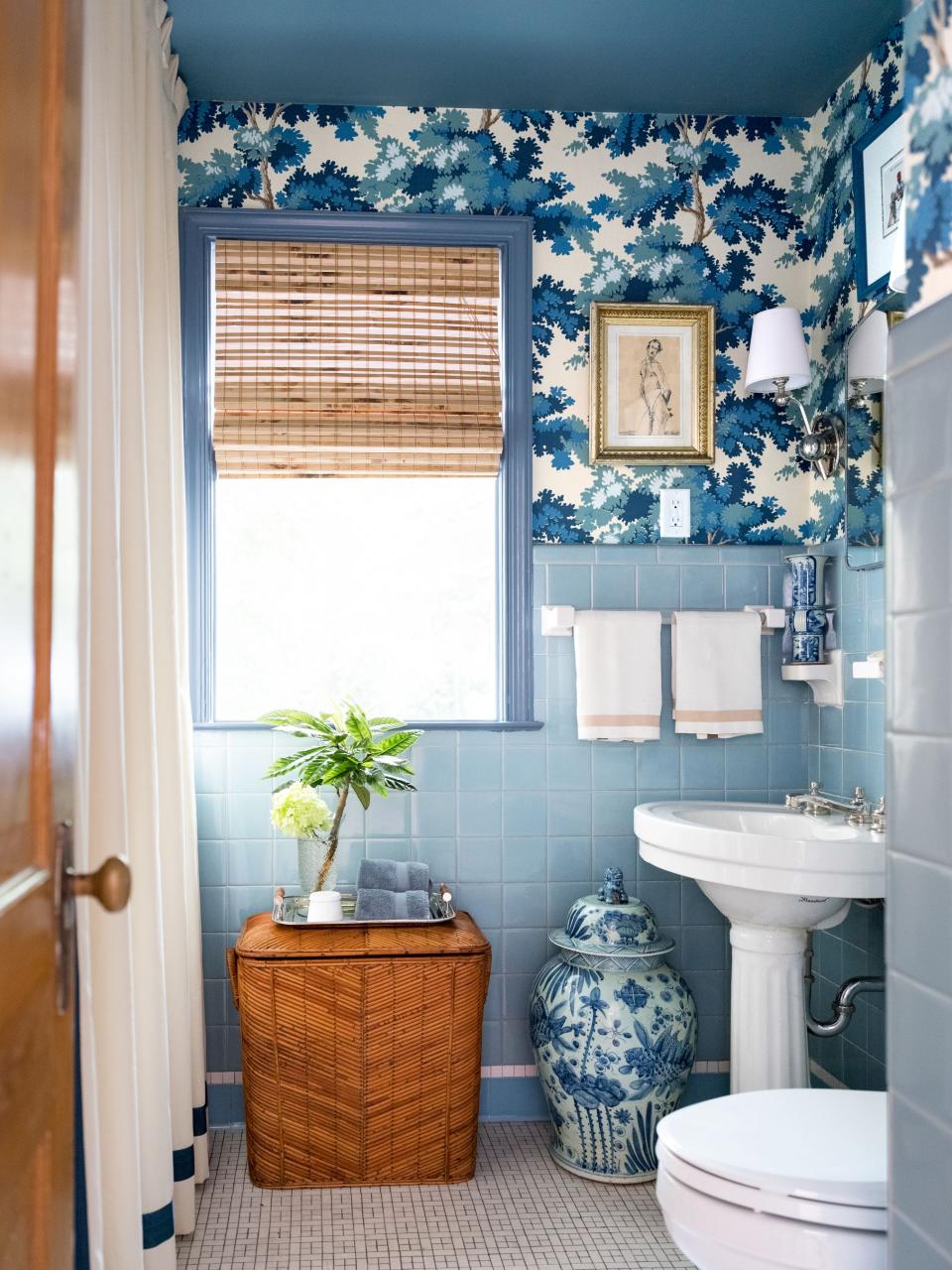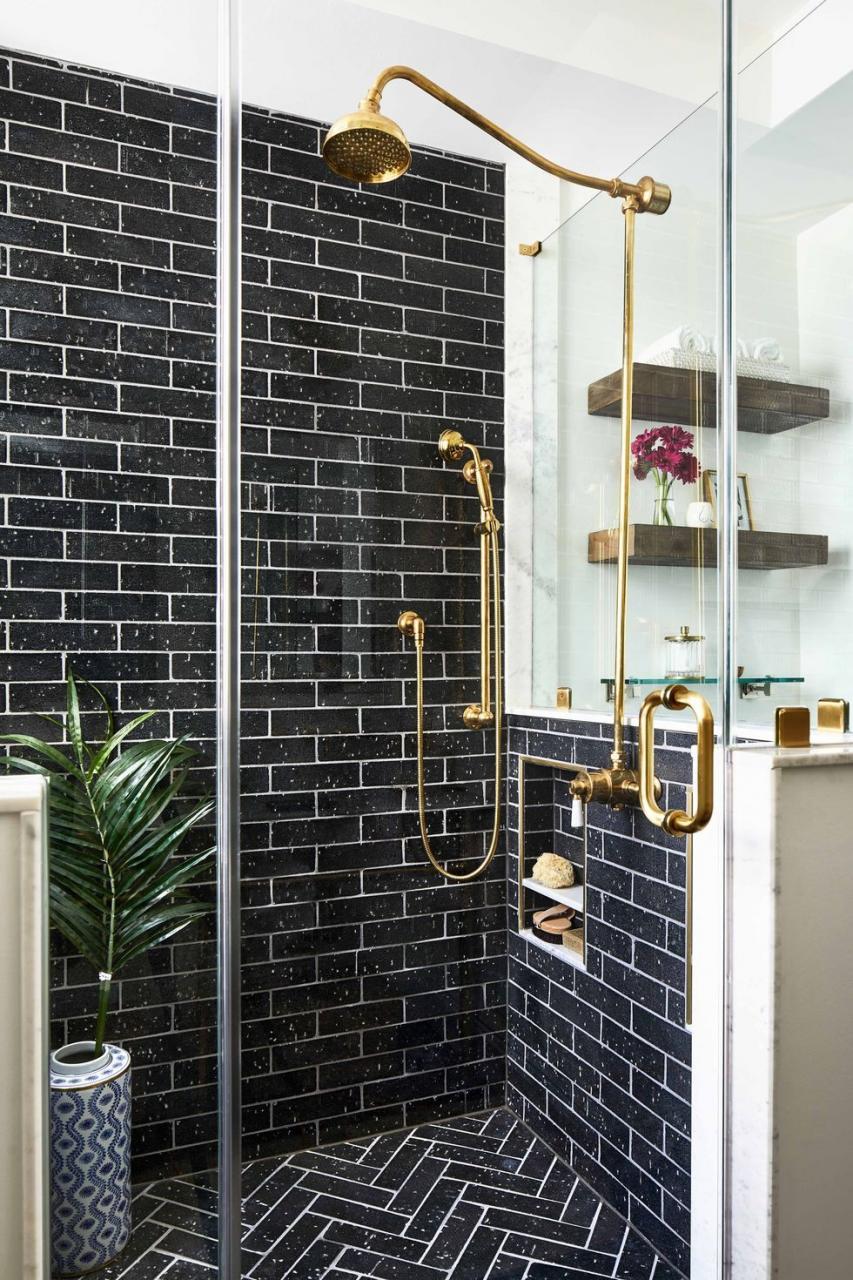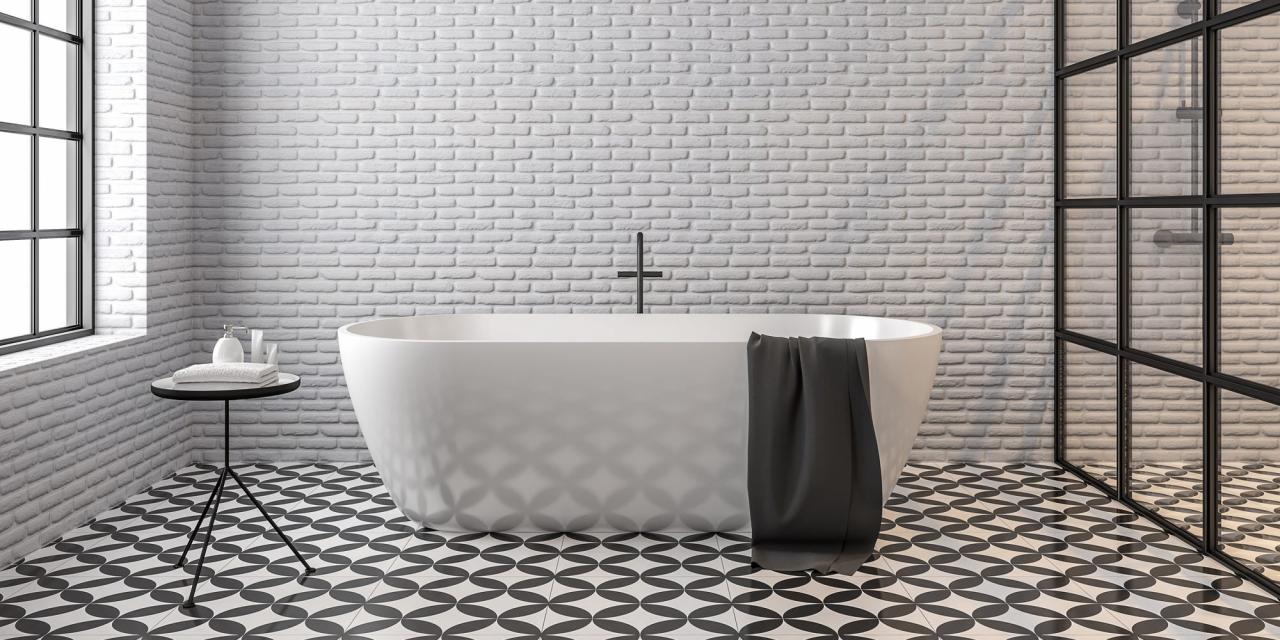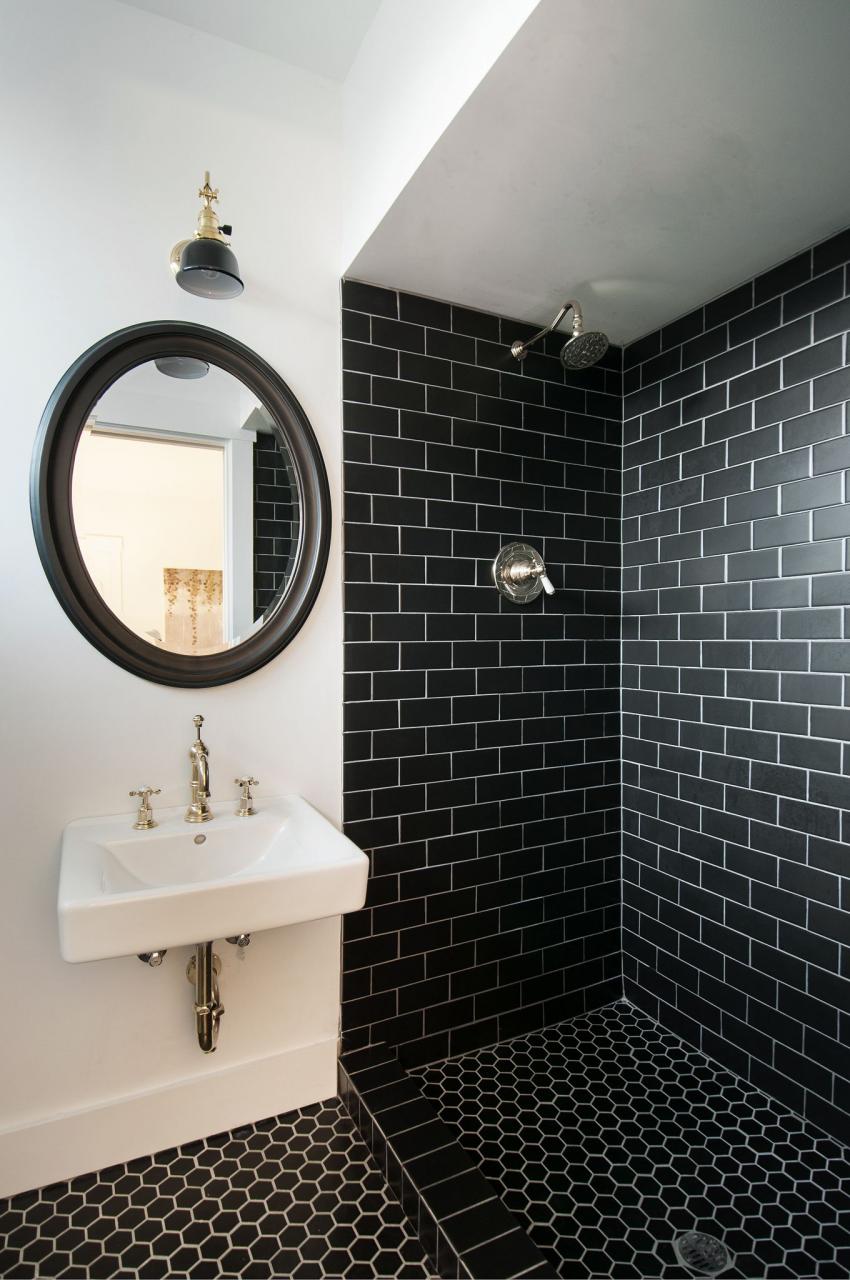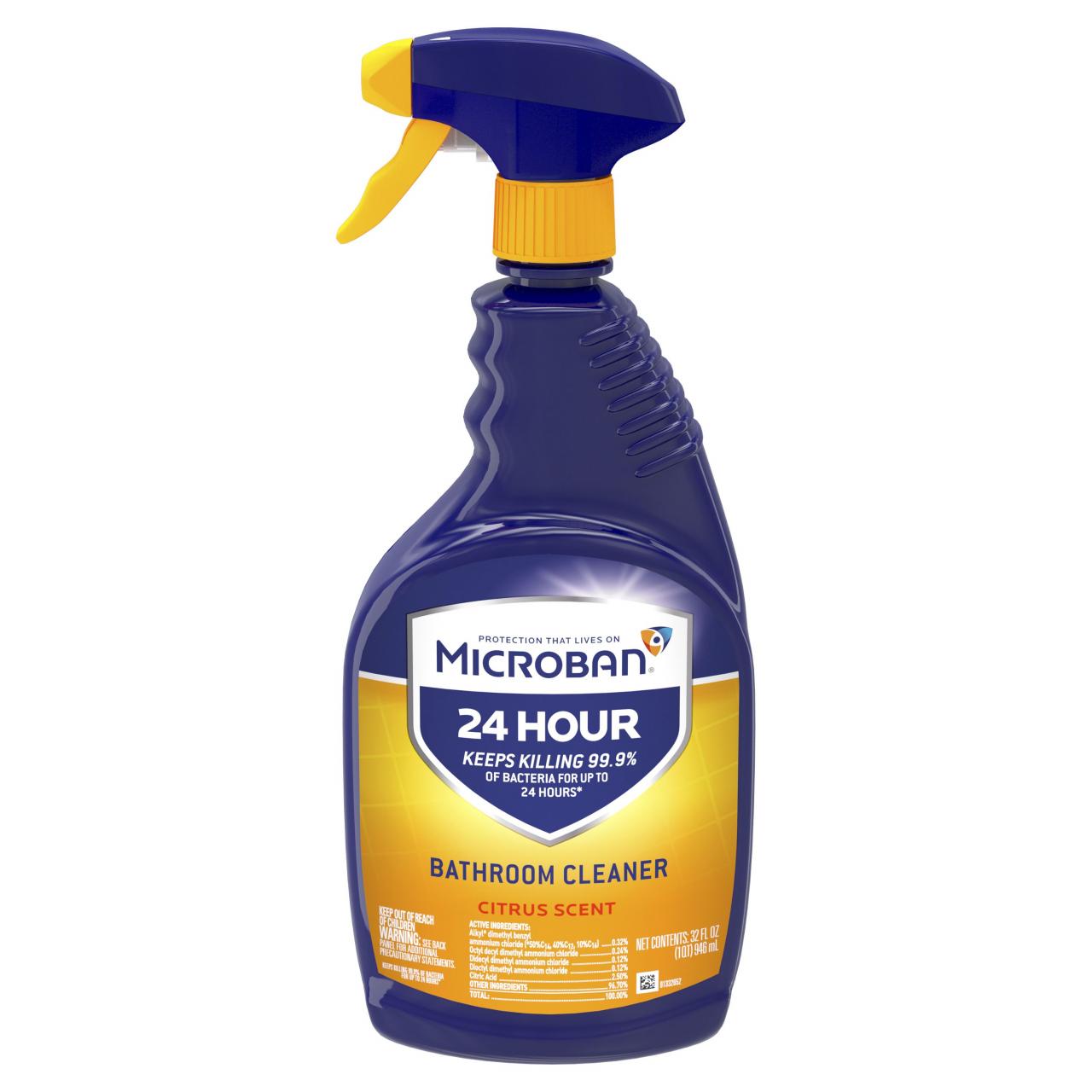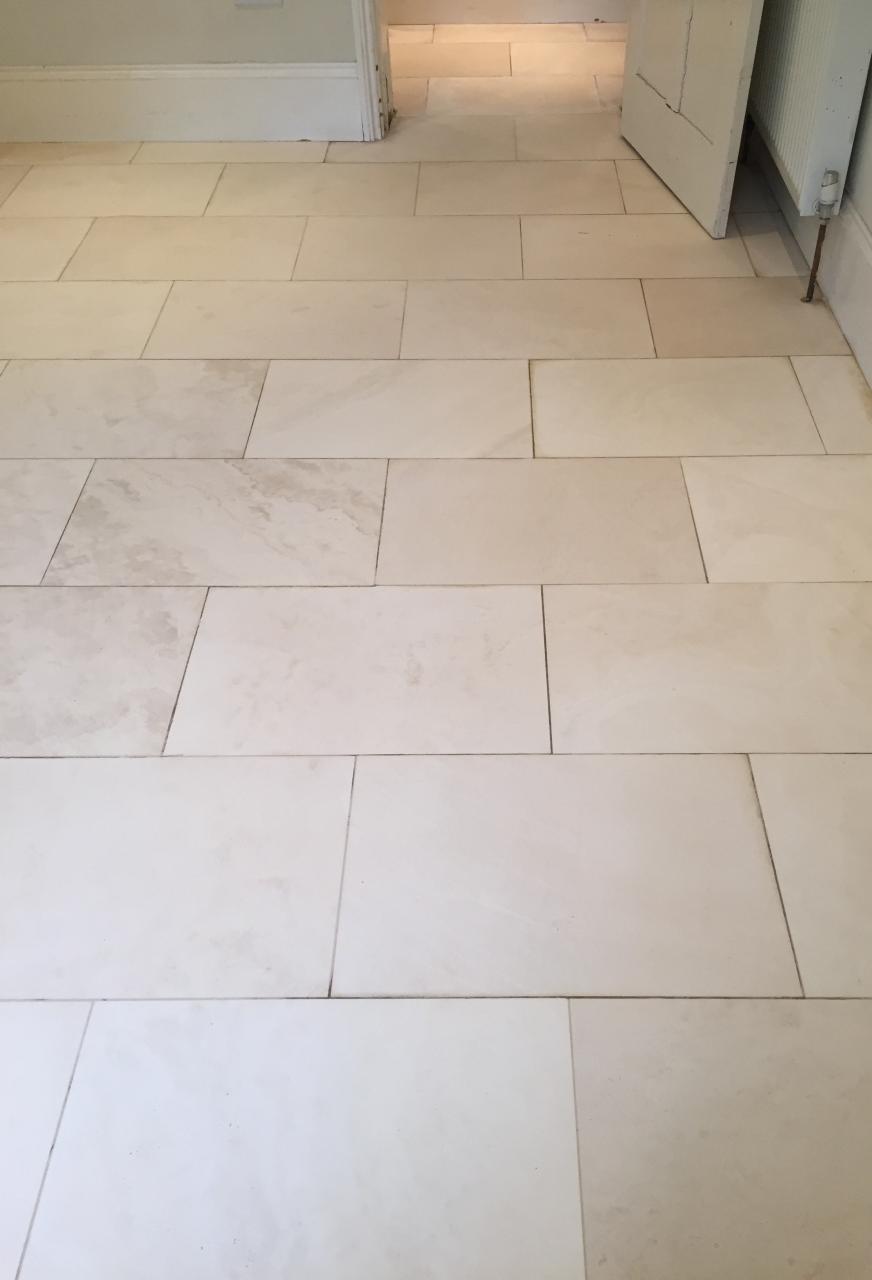Classic Subway Tile for a Timeless Look
When it comes to bathroom design, I’ve always gravitated toward elements that are timeless yet versatile, and subway tiles fit that description perfectly. These classic rectangular tiles have been a staple in bathroom design for over a century, and for good reason. They offer a clean, simple look that never goes out of style, making them a smart choice for anyone looking to create a bathroom that stands the test of time.
- A Brief History of Subway Tiles: Subway tiles originally debuted in the New York City subway system in the early 1900s, and their popularity quickly spread to homes around the world. The tiles were prized for their durability, ease of cleaning, and their ability to reflect light, making spaces feel brighter and more open. I love how this history adds a layer of nostalgia and authenticity to any bathroom that features these tiles.
- Versatility in Design: One of the things I appreciate most about subway tiles is their versatility. Whether you prefer a traditional or contemporary look, these tiles can be adapted to suit your style. For a classic appearance, I recommend sticking with white tiles and arranging them in a standard brick pattern. If you’re looking to add a modern twist, consider experimenting with different colors, sizes, or patterns, such as a herringbone or vertical layout.
- Pairing Subway Tiles with Grout: The grout you choose can have a big impact on the overall look of your subway tiles. I’ve found that white grout creates a seamless, understated look, while darker grout emphasizes the tile pattern and adds a bit of edge. If you’re feeling adventurous, you can even opt for a colored grout to create a striking contrast. It’s a small detail, but it can improve the design of your bathroom.
- Subway Tiles in the Shower: Subway tiles are a popular choice for shower walls, and it’s easy to see why. Their water-resistant nature makes them perfect for wet areas, and their reflective quality helps brighten up the space. I’ve always admired how subway tiles can make even the smallest showers feel clean and fresh. Plus, their simple design pairs well with almost any other material, from glass shower doors to natural stone flooring.
- Accentuating with Borders and Niches: To add a touch of sophistication, consider incorporating a border or niche within your subway tile installation. I like to use a contrasting tile or a decorative mosaic to create a border that draws the eye and adds interest to the walls. Niches are also a practical and stylish way to break up the tile and provide a convenient place to store shower essentials.
- Long-Lasting Appeal: What I love most about subway tiles is their ability to remain stylish decade after decade. While trends may come and go, the classic appeal of subway tiles ensures that your bathroom will always look fresh and inviting. Whether you’re renovating an old bathroom or designing a new one, these tiles are a choice you won’t regret.
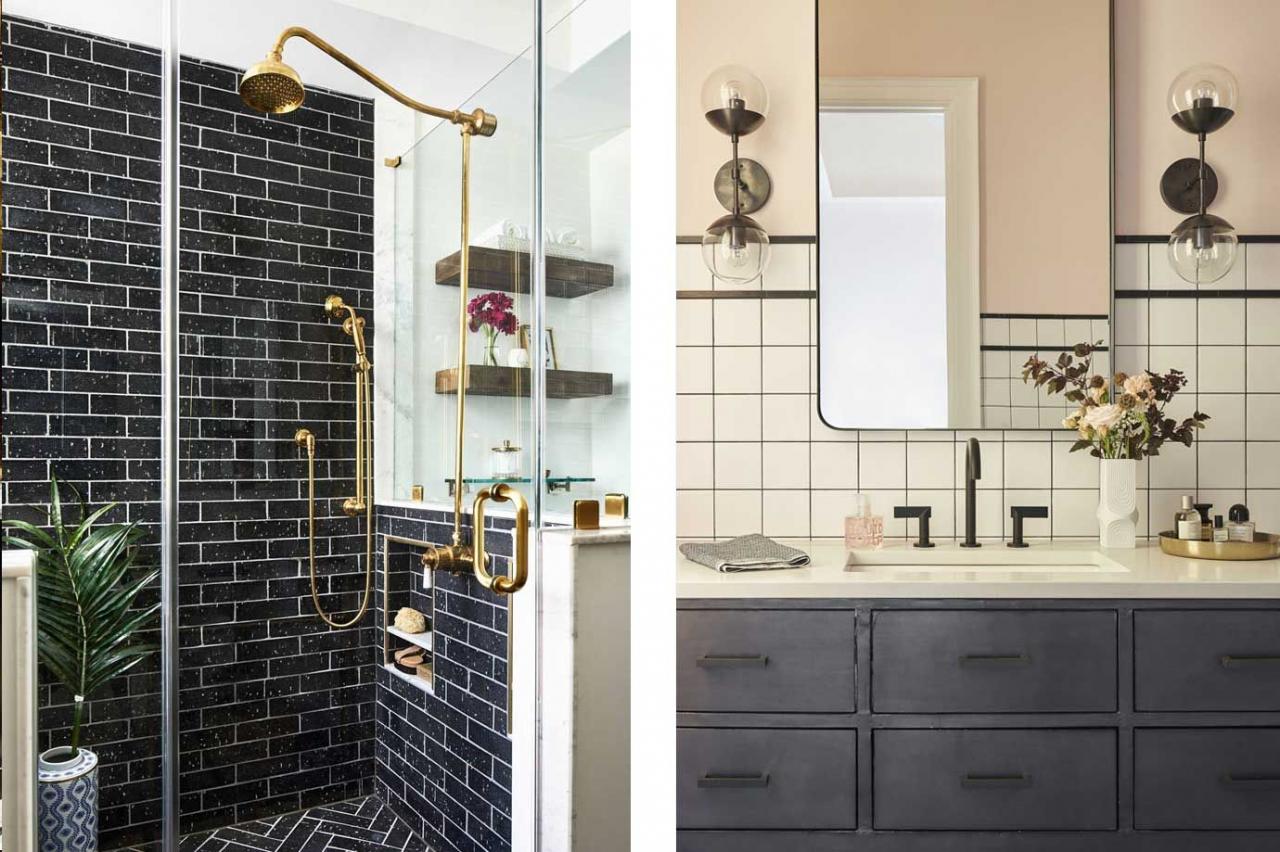
Bold and Beautiful: Statement Floor Tiles
I’ve always believed that the floor is a canvas waiting to be transformed, especially in a bathroom. Statement floor tiles are an excellent way to make a bold impact in this often-overlooked space. Whether you prefer vibrant colors, intricate patterns, or unique shapes, statement tiles can turn your bathroom floor into a work of art.
The Power of Patterns
Patterned tiles are a fantastic way to add character and personality to your bathroom. I’m particularly fond of Moroccan or encaustic-style tiles, which feature intricate, hand-painted designs. These tiles can make your floor the focal point of the room, transforming even the simplest bathrooms into eye-catching spaces. When using patterned tiles, I suggest keeping the rest of the room’s design relatively simple to let the floor shine.
Playing with Color
Bold colors can also make a significant statement on your bathroom floor. Whether you choose a single vibrant hue or a combination of colors, the floor becomes a playground for creativity. I’ve seen beautiful designs using deep blues, emerald greens, or even bright yellows. These colors can energize the space and create a mood that’s anything but ordinary.
Geometric Shapes and Designs
If you’re looking to make a statement without overwhelming the space, geometric tiles might be the answer. I love how hexagons, chevrons, and other geometric patterns can add visual interest while maintaining a clean, modern look. These shapes can be subtle or striking, depending on the color and pattern you choose, and they pair well with both traditional and contemporary bathroom designs.
Mixing and Matching
One of the more adventurous trends I’ve noticed is mixing different types of statement tiles to create a custom look. This might involve combining different patterns, colors, or shapes to create a unique floor design. While this approach requires careful planning, the results can be stunning. I recommend laying out the tiles beforehand to ensure the combination works harmoniously in the space.
Durability and Maintenance
Statement floor tiles are not just about aesthetics; they’re also about function. Porcelain and ceramic tiles are particularly durable and easy to maintain, which is essential in a bathroom setting. I always advise choosing tiles that can withstand moisture and frequent cleaning, ensuring that your bold design stays beautiful for years to come.
Completing the Look with the Right Décor
Once you’ve installed your statement floor tiles, the key is to complement them with the right décor. I suggest using neutral colors and simple fixtures to allow the floor to be the star of the show. A few well-chosen accessories, such as a sleek vanity or minimalist lighting, can enhance the overall look without distracting from the floor’s design.
Elegant Marble Tiles for a Luxe Feel
There’s something undeniably luxurious about marble tiles. They have a timeless elegance that elevates any bathroom, making it feel like a high-end spa. I’ve always been drawn to the natural beauty of marble, with its unique veining and subtle variations in color. If you’re looking to create a bathroom that exudes sophistication, marble tiles are a perfect choice.
The Timeless Appeal of Marble
Marble has been used in design for centuries, from ancient Greek and Roman structures to modern luxury homes. I love how its natural beauty transcends trends, making it a lasting choice for any bathroom. The unique veining patterns in each tile ensure that no two pieces are exactly alike, adding a one-of-a-kind touch to your space.
Different Types of Marble
Marble comes in various types, each with its distinct look. Carrara, Calacatta, and Statuario are some of the most popular options. Carrara marble is known for its soft gray veining and is often more affordable, while Calacatta features bolder, more dramatic veins. Statuario marble is rarer and more luxurious, with striking veining patterns. I recommend choosing the type that best fits your desired aesthetic and budget.
Marble Tiles in the Shower
Incorporating marble tiles into your shower area is a great way to create a sense of luxury. I’ve always admired the seamless look of large marble slabs, but smaller tiles can also create a beautiful effect. Whether you choose to cover the entire shower or just the walls, marble adds a touch of elegance that’s hard to beat. Just be sure to seal the tiles properly to protect them from moisture.
Using Marble on Floors and Walls
Marble isn’t just for shower walls—it can be used throughout the bathroom to create a cohesive, elegant look. I’ve seen stunning designs where marble covers both the floors and walls, creating a seamless, spa-like atmosphere. Alternatively, you can use marble as an accent, such as a feature wall or a backsplash behind the vanity. The key is to balance the marble with other materials to avoid overwhelming the space.
Caring for Marble Tiles
While marble is undeniably beautiful, it does require some maintenance to keep it looking its best. I always recommend sealing marble tiles regularly to protect them from stains and moisture. It’s also important to use gentle, pH-neutral cleaners to avoid damaging the surface. With the right care, marble tiles can maintain their luxurious appearance for many years.
Pairing Marble with Other Materials
To enhance the beauty of marble, I suggest pairing it with complementary materials. For example, brass fixtures add warmth and contrast to the cool tones of marble, while glass accents can enhance the light-reflecting qualities of the stone. I’ve also seen stunning designs that combine marble with wood for a natural, organic look. The key is to choose materials that enhance the elegance of the marble without overshadowing it.
Mosaic Tile Patterns for a Custom Touch
I’ve always found mosaic tiles to be a fantastic way to add a personal, artistic touch to a bathroom. These small tiles, often arranged in intricate patterns, can create stunning visual effects that turn a simple bathroom into a design masterpiece. Whether you’re looking to create a bold statement or a subtle accent, mosaic tiles offer endless possibilities.
Creating Custom Designs
One of the things I love most about mosaic tiles is their versatility. Because they come in a wide range of colors, shapes, and materials, you can create custom designs that reflect your personal style. I’ve seen bathrooms with everything from simple geometric patterns to elaborate murals made entirely of mosaic tiles. If you’re looking to make your bathroom truly unique, mosaic tiles are a great way to do it.
Using Mosaic Tiles as Accents
While you can certainly cover entire walls or floors with mosaic tiles, I often prefer to use them as accents. A mosaic tile backsplash behind the vanity, a border around the shower, or a decorative strip running along the floor can add just the right amount of visual interest without overwhelming the space. These small touches can make a big impact, adding depth and texture to the design.
Mixing Materials for Added Interest
Another way to make your mosaic tile design stand out is by mixing different materials. I’ve seen beautiful designs that combine glass, stone, and metal tiles to create a rich, layered look. The contrast between the different textures and finishes adds complexity to the design, making the bathroom feel more sophisticated and thoughtfully designed.
Mosaic Tiles in the Shower
Mosaic tiles are a popular choice for shower floors because their small size allows them to conform to the slope of the shower pan. I also love how they add a slip-resistant surface, which is both practical and stylish. You can use mosaic tiles throughout the shower, or just on the floor, to create a cohesive look that’s both functional and beautiful.
Choosing the Right Grout
The grout you choose can have a big impact on the look of your mosaic tiles. I’ve found that a contrasting grout color can emphasize the individual tiles and make the pattern stand out, while a matching grout color creates a more seamless look. It’s also important to choose a high-quality grout that can withstand the moisture and wear of a bathroom environment.
Caring for Mosaic Tiles
While mosaic tiles are relatively easy to maintain, it’s important to clean them regularly to keep them looking their best. I recommend using a mild, non-abrasive cleaner to avoid damaging the tiles or grout. It’s also a good idea to seal the grout periodically to protect it from stains and moisture. With proper care, mosaic tiles can maintain their beauty for years to come.
Textured Tiles for a Spa-Like Experience
There’s something about textured tiles that instantly makes a bathroom feel more like a spa. I’ve always been drawn to their tactile quality and the way they add depth and dimension to a space. Whether you’re looking to create a serene retreat or a modern, minimalist bathroom, textured tiles can help you achieve that spa-like experience.
Adding Depth and Dimension
Textured tiles are a great way to add depth and dimension to your bathroom. I love how they can create subtle shadows and play with light, giving the room a dynamic, layered look. Whether you choose tiles with a three-dimensional pattern or a natural stone with a rough surface, the texture adds a richness that smooth tiles simply can’t match.
Choosing the Right Texture
The texture you choose can have a big impact on the overall feel of your bathroom. For a more natural, organic look, I recommend stone or wood-look tiles with a rough, uneven surface. If you’re aiming for a more modern aesthetic, tiles with a geometric or linear pattern can create a sleek, sophisticated vibe. The key is to choose a texture that complements the rest of your bathroom design.
Textured Tiles in the Shower
One of my favorite places to use textured tiles is in the shower. Not only do they add a spa-like quality to the space, but they also provide a slip-resistant surface, which is both practical and stylish. I’ve seen beautiful showers with textured stone or pebble tiles on the floor, which add a natural, soothing feel to the space.
Creating a Feature Wall
If you want to make a statement, consider using textured tiles to create a feature wall in your bathroom. I’ve always admired how a textured wall can draw the eye and become the focal point of the room. Whether you choose a bold geometric pattern or a subtle, natural texture, a feature wall adds a touch of luxury and sophistication to any bathroom.
Combining Textures with Other Materials
To enhance the beauty of textured tiles, I suggest pairing them with contrasting materials. For example, smooth, glossy surfaces like glass or polished marble can create a striking contrast with rough, textured tiles. I’ve also seen stunning designs that combine textured tiles with natural wood or metal accents, adding warmth and richness to the space.
Caring for Textured Tiles
While textured tiles are beautiful, they do require a bit more maintenance than smooth tiles. I recommend using a soft brush or cloth to clean the textured surface, as dirt and grime can sometimes get trapped in the grooves. It’s also important to seal natural stone tiles to protect them from moisture and stains. With the right care, your textured tiles will continue to add beauty and interest to your bathroom for years to come.
Eco-Friendly Tile Options for a Green Bathroom
As someone who cares about the environment, I’ve always been on the lookout for eco-friendly design options, and bathroom tiles are no exception. Luckily, there are plenty of sustainable tile options that allow you to create a beautiful bathroom while minimizing your environmental impact. From recycled materials to energy-efficient production methods, eco-friendly tiles are a great way to go green in your bathroom design.
Recycled Glass Tiles
One of my favorite eco-friendly tile options is recycled glass. These tiles are made from post-consumer glass, such as bottles and windows, that would otherwise end up in a landfill. I love how recycled glass tiles come in a wide range of colors and finishes, from clear and translucent to opaque and frosted. They add a modern, sleek look to any bathroom, while also being an environmentally responsible choice.
Sustainable Stone Tiles
If you prefer a more natural look, sustainable stone tiles are another great option. Many stone tiles, such as slate, travertine, and granite, are sourced from quarries that use sustainable practices, minimizing their environmental impact. I always recommend looking for stone tiles that are certified by organizations like the Forest Stewardship Council (FSC) or the Natural Stone Council, which ensure that the materials are sourced responsibly.
Low-Impact Ceramic and Porcelain Tiles
Ceramic and porcelain tiles can also be eco-friendly, especially if they are produced using low-impact methods. I’ve found that some manufacturers use energy-efficient kilns and source their raw materials locally, reducing the carbon footprint of their tiles. Additionally, ceramic and porcelain tiles are long-lasting and durable, which means they won’t need to be replaced as often, reducing waste over time.
Bamboo Tiles for a Natural Touch
Bamboo is a rapidly renewable resource, making it an excellent choice for eco-friendly tiles. I’ve always been impressed by how bamboo tiles can add a warm, natural touch to a bathroom, while also being incredibly durable and water-resistant. Bamboo tiles are available in a range of colors and patterns, from light and airy to dark and dramatic, allowing you to create a custom look that’s both beautiful and sustainable.
Cork Tiles for a Soft, Eco-Friendly Floor
Cork is another sustainable material that I love for bathroom flooring. It’s harvested from the bark of cork oak trees, which can be done without harming the tree, making it a renewable resource. Cork tiles are soft underfoot, naturally water-resistant, and have insulating properties, making them a comfortable and eco-friendly choice for bathroom floors. Plus, they add a unique, natural texture that sets them apart from more traditional tile options.
The Benefits of Going Green
Choosing eco-friendly tiles for your bathroom is not just good for the environment—it’s also good for your home. Many sustainable materials are naturally resistant to mold, mildew, and bacteria, creating a healthier environment for you and your family. Plus, by choosing long-lasting, durable materials, you’ll reduce the need for replacements and repairs, saving you money in the long run. Going green in your bathroom design is a win-win for both you and the planet.
Mixing and Matching Tiles for a Unique Design
One of the most exciting aspects of bathroom design, in my opinion, is the opportunity to get creative with tile choices. Mixing and matching different types of tiles can lead to a truly unique and personalized space that reflects your style. Whether you’re combining colors, patterns, or materials, the possibilities are endless when it comes to creating a custom look for your bathroom.
Combining Different Colors
Playing with color is one of the easiest ways to mix and match tiles. I’ve seen stunning designs where a bold, colorful tile is paired with a neutral tile to create a balanced, eye-catching look. For example, you might use a vibrant blue or green tile as an accent in an otherwise white or gray bathroom. The key is to choose colors that complement each other and create a cohesive design.
Mixing Patterns and Textures
Another way to add interest to your bathroom is by mixing patterns and textures. I love the look of combining a smooth, glossy tile with a textured or patterned tile. This contrast adds depth and dimension to the space, making it feel more dynamic. You can also mix different patterns, such as pairing a classic subway tile with a bold geometric design. Just be sure to balance the patterns so that the overall look doesn’t become too busy.
Incorporating Different Tile Sizes
Playing with different tile sizes is another great way to create a unique design. I’ve seen beautiful bathrooms where large tiles are paired with smaller mosaic tiles to create a contrast in scale. This approach can help define different areas of the bathroom, such as using larger tiles on the floor and smaller tiles in the shower. It’s a subtle way to add visual interest without overwhelming the space.
Using Tiles as Borders and Accents
One of my favorite techniques for mixing tiles is to use one type of tile as a border or accent within a larger field of another tile. For example, you might use a decorative mosaic tile as a border around a plain subway tile wall, or as an accent stripe in the shower. This approach allows you to introduce a pop of color or pattern without committing to a full wall or floor of bold tiles.
Creating a Focal Point
When mixing and matching tiles, it’s important to create a focal point to anchor the design. I often recommend choosing one area of the bathroom, such as the shower or vanity, to be the focal point, and using a bold or patterned tile in that area. The rest of the tiles can be more neutral or complementary, allowing the focal point to stand out. This approach ensures that the design feels intentional and cohesive.
Experimenting with Grout Colors
Don’t forget about grout when mixing and matching tiles. I’ve found that grout color can play a big role in tying the design together. A contrasting grout color can emphasize the individual tiles and create a more dramatic look, while a matching grout color can help different tiles blend together more seamlessly. It’s a small detail, but it can make a big difference in the overall design.
Bathroom Tile Ideas
Creative Bathroom Tile Ideas
Bathroom Tile Ideas – Bath Tile Backsplash and Floor Designs
Creative Bathroom Tile Design Ideas
Essential Bathroom Tile Design Ideas
Related Posts:

